Bringing the thrill back to the hobby’s most cherished institution
Yesterday, we took a look at all of the Rookie Cards and associated prospect paraphernalia that have been released for the Mets so far this year. After that lengthy exercise, we learned a few things about Rookie Cards. Here’s a brief summary.
These are Rookie Cards:
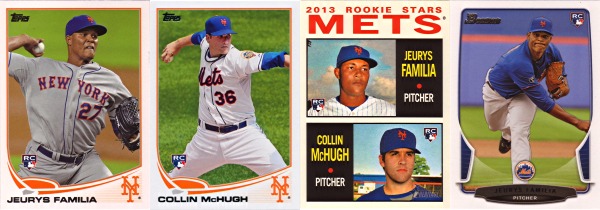
Seems pretty straightforward. These are also Rookie Cards:
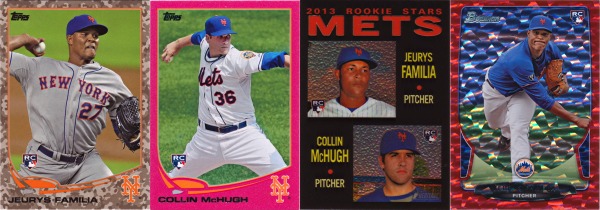
Now things are getting a bit strange, but this still seems reasonable. However, these are also Rookie Cards:
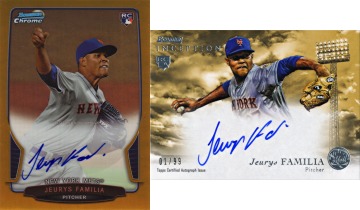
So just what the heck isn’t a Rookie Card? Well, these for example:
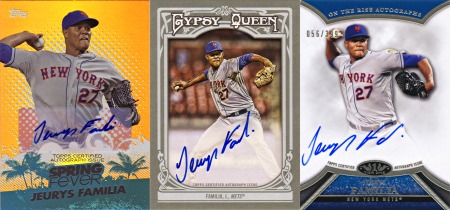
How are those not Rookie Cards while the ones above are Rookie Cards? This isn’t making much sense anymore. And that’s when we get to these:
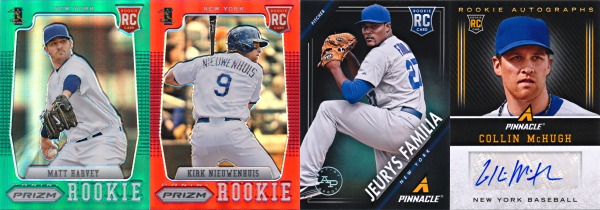
Rookie Cards? Well, they say RC at least, so maybe? But these definitely are NOT Rookie Cards:
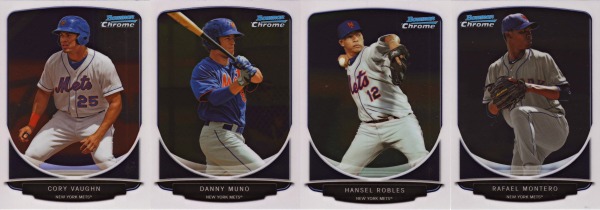
Even though they are the first MLB-licensed cards for the players depicted. Just for fun, let’s jazz things up a bit:
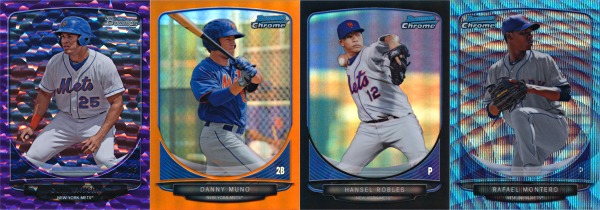
Still not Rookie Cards. Neither are these, even though these guys are rookies in 2013:
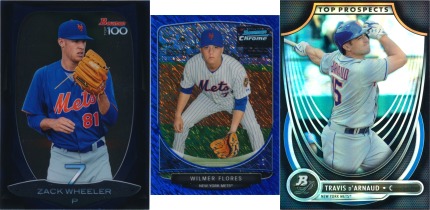
And especially not these minor league cards:
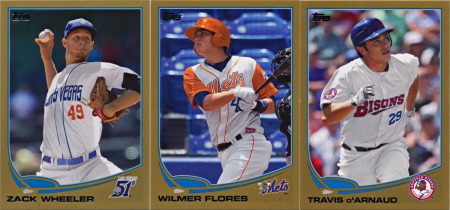
So the guys with Rookie Cards didn’t do much of anything during the season, while the guys who were actual rookies this year have to wait until after the season to get their first Rookie Cards? And none of them are the first MLB-licensed cards for any of them? What’s the point of even having Rookie Cards if there’s nothing special about them? It’s easy to see what’s wrong here, but what we need are solutions, not more problems. Luckily, I’m here to offer my services in solution management to get the Rookie Card back on track.
Step 1: Close the Prospect Loophole
When the MLBPA came up with the new rules for Rookie Cards starting in 2006, they seemed to be able to keep all pre-rookie players out of base sets. And then the manufacturers reconfigured base sets to put all prospects in insert sets or base-like insert sets, thus rendering the MLBPA’s efforts largely moot. If we want the Rookie Card to mean anything, it can’t be preceded by several years worth of non-RC prospect cards. That means either giving up on the new RC rules or getting the prospects out of MLB-licensed products. Some leeway needs to remain to allow non-players and possibly prospects not presented as players, but taking a picture of a kid playing college ball and slapping some MLB logos on it shouldn’t be the way these guys get their first MLB cards. That’s just crazy.
Step 2: Send Minor League Products Down to the Minors
If you look at products like Bowman Draft Picks & Prospects, Bowman Inception, and Bowman Platinum, it becomes obvious that the few actual MLB players they contain are only there as token representatives to make the product qualify as a Major League product. Let’s just end the pretense and make these official Minor League products alongside Pro Debut and Heritage Minors. It already seems a bit odd that there is no Bowman MiLB product when minor leaguers are supposed to be what Bowman is all about. There are also no premium MiLB products, which this move would fix. Is the concern that nobody will buy premium products that aren’t MLB-licensed? If so, Panini should have done away with that. Plus, it would give us more shots of players in their proper minor league uniforms, which are often more diverse and unique than their big league counterparts (Brewers excepted).
Step 3: Push Back Release Dates on RC-heavy Products
Topps Series 1 launches about a month into the year, well before offseason deals can be accounted for. Topps Series 2 launches in June, before most rookies who debut in April can be incorporated. Bowman launches on April 30 next year, just one month into the season. That leaves most rookies who make their debuts during the season waiting until October or next year for their first Rookie Cards. If the new rules were supposed to match up Rookie Cards with rookie players, they are failing miserably. Push the release dates of these products back a month or two into February/March, July/August, and June/July, respectively, and this problem should go away. Assuming that Topps can get its production chain running smoothly. Given their recent staffing issues, there may be bigger issues in play.
Step 4: The Nuclear Option – Bring Back the One True Rookie Card
I wouldn’t be doing this issue justice if I didn’t bring things to the point of absurdity, so let’s go crazy. What people are longing for here are the days before we had new products every week, dozens of parallels and inserts in every product, and cards produced of players who wouldn’t reach the majors for several years, if ever. In 1981, our innocence was lost forever when we were given a choice of baseball card products and competition resulted in the hobby we have today. MLB has done its part by returning us to the One True Manufacturer, but the legacy of the non-monopoly era remains in the form of the dozens of products competing for our attention. Some players end up with Rookie Cards in most of them, while others have to settle for one or two, punished for debuting at the wrong time of the year. There’s one way to fix this and I’m sure it won’t be a popular one. Do away with official Rookie Cards as base cards entirely. Instead, produce all Rookie Cards in a common design inserted into all products, with the exact mix of players changing as rookies debut.
While a silly idea on the surface, it does solve several problems in one elegant solution. All players, regardless of when they reach the majors, will be able to have Rookie Cards distributed in equal numbers in a consistent design. It would also eliminate the inconsistent application of RC rules regarding inserts. Instead, there will be only one Rookie Card for each player – no parallels, autographs, relics, etc. Players could still have rookie cards (lowercase) in any products released after their debut, but the big RC would only apply to one card. Lead times will also be less of a factor, as the Rookie Card mix could be changed at any point up until packout without affecting checklists or insert ratios. This also has the advantage of taking the MLBPA definition of Rookie Card out of the base products and limiting it to one set of cards, allowing the hobby to decide how to handle cards released in a player’s Rookie Card year or cards released of players who never appear in the official Rookie Card set. It’s a solution that would probably be universally hated by the MLBPA, Topps, other manufacturers, dealers, and collectors alike, but it’s better than what we have now. Makes you wonder if the point of absurdity is where we already are.
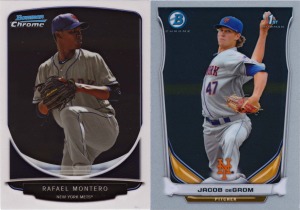









Recent Comments